Realizing Children’s Rights in Madagascar
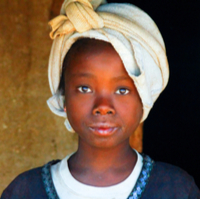
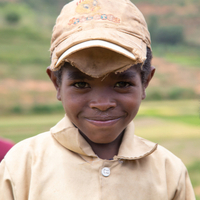
The plight of children in Madagascar has been worsening since 2012. Political instability in the country has hindered the implementation and development of relevant policy and legislation to advance children’s rights. Children are at risk of early child marriage, child labour, sex tourism and gender-based violence, climate change, and discrimination and violence, all of which endanger children in the country.

Children’s Rights Index: 5,63 / 10
Black level: Very serious situation
Population: 28,4 million
Pop. ages 0-14: 40.36%
Life expectancy: 66.68 years
Under-5 mortality rate: 50.6‰
Madagascar at a glance
Madagascar is an island located off the southeast coast of Africa in the Indian Ocean. As an island, it is famous for its unique wildlife, biodiversity, a wealth of natural resources and natural environment (BBC Monitoring, 2019). The Malagasy economy has been built on the cultivation of crops such as coffee, vanilla, cloves and paddy rice. Despite an abundance of natural resources and a successful tourism industry, as a country, Madagascar remains one of the poorest in the world, heavily dependent on foreign aid (BBC Monitoring, 2019), with 75% of the population living on less than $1.90 a day (UN News, 2020).
Madagascar gained independence from France in 1960 and since has experienced turbulent years, coups, political instability, violent unrest and disputed elections. The most recent coup in 2009 resulted in five years of political deadlock and economic sanctions (BBC Monitoring, 2019). Madagascar’s human capital index is ranked amongst one of the lowest in the world. As a country, it is ranked as the fourth highest rate of chronic malnutrition, with one in every two children under the age of five years old suffering from stunting (The World Bank, 2020).
The natural environment of Madagascar is vulnerable to natural disasters and climate change. This has severely affected the country, experiencing up to three cyclones a year (The World Bank, 2020). In 2020, Madagascar’s socio-economic situation worsened due to several natural disasters such as drought in the south and floods in the north, disease outbreaks such as COVID-19, dengue fever, measles and malaria spread across the island rapidly.
Status of children’s rights[1]
The lingering effects of political unrest and climate change in Madagascar has left children’s rights in a very precarious situation. Due to various long-term issues such as child marriage, poverty, restricted access to education, commercial sexual exploitation of Malagasy children, violence against children and discrimination, Madagascar has sought to implement numerous national policies in line with Sustainable Development Goals (SGDs).
Madagascar ratified the Convention on the Rights of the Child (CRC) in 1990 and it is an integral part of their national law as it came into force in 1991 (Child Rights International Network, 2012). Although the CRC is directly binding judicially and administratively, little is known about how it is applied in practice. In 2000, Madagascar signed the Optional Protocol to the Convention on the Rights of the Child on the involvement of children in armed conflict and Optional Protocol to the Convention on the Rights of the Child on the sale of children, child prostitution and child pornography and both were ratified in 2004 (Forowicz, 2003).
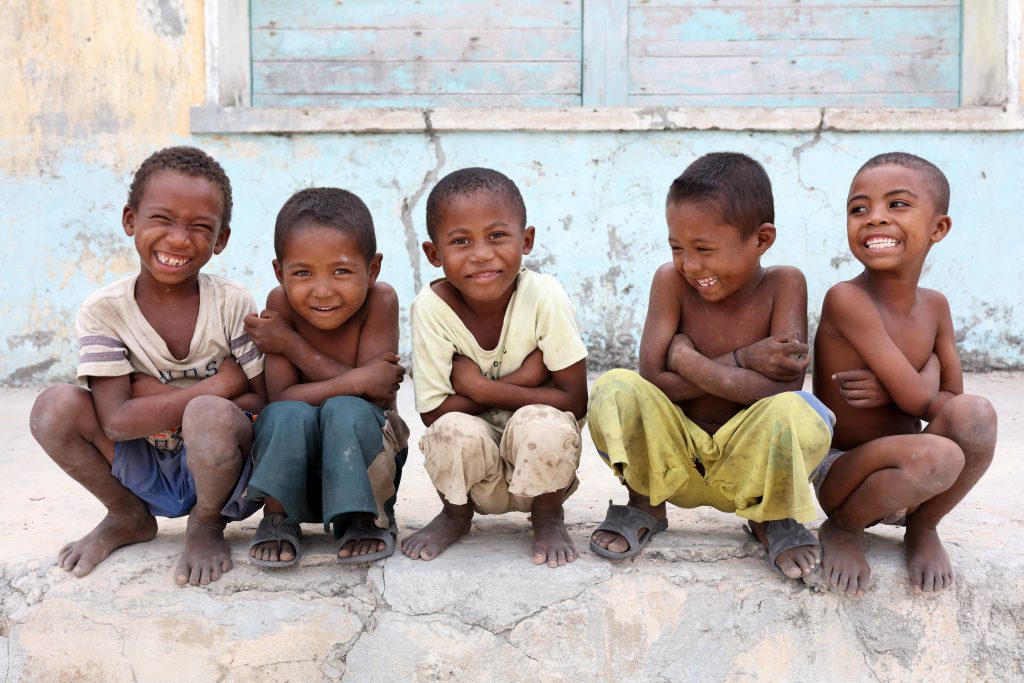
Madagascar is party to other international human rights instruments. In 1971 they ratified the International Covenant on Civil and Political Rights and signed but not ratified the Convention Against Torture and Other Cruel and Inhuman or Degrading Treatment or Punishment in 2001 (Forowicz, 2003). Regionally, Madagascar is party to the African Charter on the Rights and Welfare of the Child which was signed and ratified in 2005 and the African Charter on Human and Peoples’ Rights in 1992 (Forowicz, 2003).
Notwithstanding these positive commitments, international expert bodies such as the Committee on the Rights of the Child have recognized that political turmoil has had a negative effect on the implementation and development of legislation and policies to further children’s rights in Madagascar (Committee on the Rights of the Child, 2012). In the Committee’s Concluding Observations to Madagascar in 2012, they acknowledged the legislative reform to the Penal Code in relation to combatting sex tourism and child trafficking (Child Rights International Network, 2012).
However, a gap exists between legislation and practice and it was noted by the Committee that there has been inadequate implementation of laws relating to discrimination of twins, girls, children with disabilities, children living with HIV/AIDS, violence against children and sexual exploitation (Child Rights International Network, 2012).
Addressing the needs of children
Right to education
Under the Malagasy Constitution, every child is entitled to free primary education and this is reflected in the government’s commitments to achieve the international Education for All (EFA) target. The EFA initiatives have funded the recruitment of new academic staff, the building of schools, an increase in academic materials as well as school canteens. Through this initiative, the number of school teachers dramatically rose from 8,300 teachers in 2003 to 60,000 teachers in 2011 (Education Development Trust. Government of Madagascar. UNICEF, 2016).
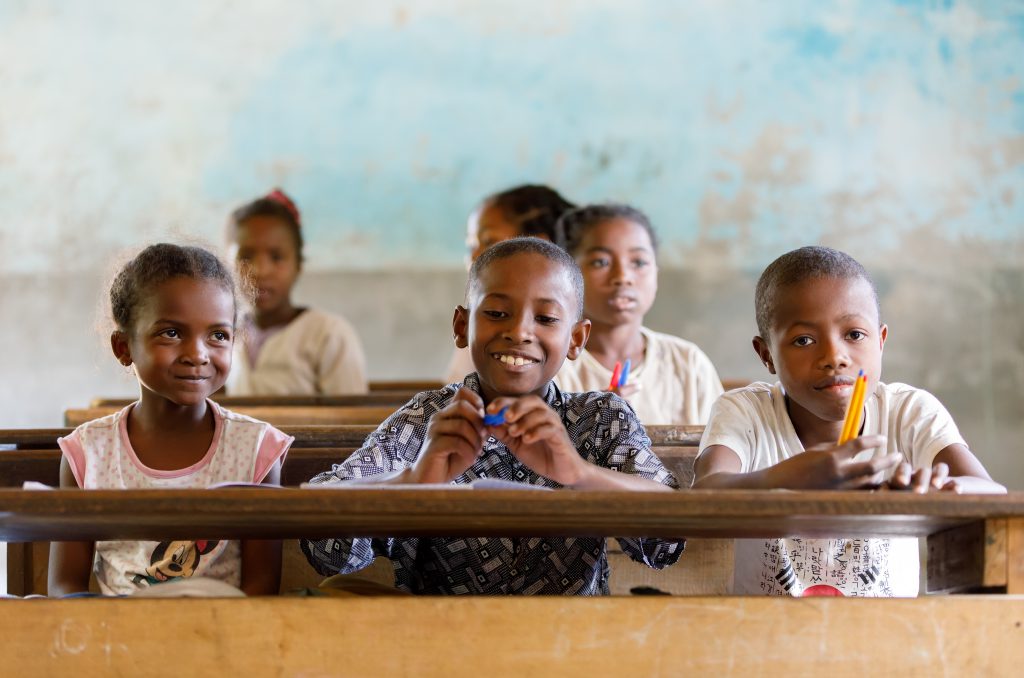
However, political turmoil in 2009 had a drastic effect on education. The low school enrolment rates are a direct result of poverty, a lack of trained teachers or facilities. Increasing poverty and loss of jobs pushed children into different forms of child labour as parents were unable to financially support their children (ECPAT Netherlands, 2014). As part of the projects financed by the World Bank in 2020, 266 classrooms have been built through the Madagascar Emergency Support to Education for All Project (PAUET). Due to monthly cash transfers, more than 98,000 children are now able to access education (The World Bank, 2020).
The Committee on the Rights of the Child raised concerns regarding the discrimination of children with disabilities and recommended that the government strengthen and implement programmes to tackle inequalities in access to education. At a primary level, children with disabilities have more support. At a secondary level there are less facilities to support children. Historically, education facilities for children with disabilities have been predominantly funded by churches (Education Development Trust. Government of Madagascar. UNICEF, 2016).
Identification of disabilities was based on physical impairments and parents are often reluctant to inform the school on their child’s disability out of fear of rejection, as culturally a disability is viewed as a result of witchcraft (Education Development Trust. Government of Madagascar. UNICEF, 2016). Physical access to schools, lack of transport or lack of financial resources to travel to schools makes education difficult to access for children with disabilities.
The COVID-19 school closures between April to August 2020, further exposed children to vulnerabilities such as exploitation, early child marriage, violence and child labour. In addition to its devastating health effects – which are exacerbated by low levels of public health and sanitation – the pandemic has highlighted the glaring vulnerabilities in the country’s systems for combating gender-based violence and sexual exploitation (UNICEF, 2020).
Right to health
Both health and climate related emergencies pose detrimental risks to the most vulnerable children in Madagascar. The various health emergencies that affect Malagasy children are the measles outbreak and the seasonal pneumonic plague outbreak. In 2018, 15,000 measles cases were reported and of those cases, 74% were children between the ages of 1 and 14 (UNICEF, 2019).
Approximately half of all children in Madagascar are malnourished, causing stunting, severe muscle wasting, because children are not getting the necessary nutrients to grow (UNICEF, 2019). The World Food Programme (WFP) raised that due to the current seasonal insecurity (also known as lean season) in Madagascar worsening, more than 700,000 people have been left without food. Despite efforts by WFP, who have since helped to feed 230,000 people, the country is still left with 11.4 million who are left undernourished (UN News, 2020). Madagascar has the 5th highest chronic malnutrition rates in the world (UNICEF Madagascar, 2018).
In Madagascar, it is estimated that one in five child deaths is directly linked to exposure to pollution. Children are affected by pollution through cars, indoor pollution with the use of coal stoves and bacterial pollution of water which is caused by open defecation. Open defecation affects 86% of households in Madagascar (UNICEF, 2019). Less than one in three children have received polio vaccines, causing a yearly polio pandemic. The measles outbreak in 2020 killed over 1,200 children (UN News, 2020).
In the past 15 years Madagascar has made progress in reducing the under-five child mortality rate from 8.8% in 2004 to 5.06% in 2019 (The World Bank, 2021). Over 20% of under-five child mortality in Madagascar is linked to pneumonia which is the leading cause of death, followed by malaria, nutrition related factors and diarrhoea.
Right to clean water and sanitation
Madagascar ranks the 3rd lowest globally in the use of unimproved water and basic sanitation. Of the rural population, only 36% have access to improved water which ranks Madagascar as the 8th lowest country in the world. Children have limited access to clean water and have poor hygiene and sanitation practices, this is a grave concern as it is directly linked to diarrhea and chronic malnutrition which affects children under 5 years of age (UNICEF Madagascar, 2018).
Due to poor sanitation, 40% of children still practice open defecation and 93% of drinking water in rural areas is contaminated by e-coli (UN News, 2020). As a result of this and a poor diet, 42% of children are chronically malnourished. Bacterial pollution of water is a problem that affects a majority of children in Madagascar, and contaminated water contributes to parasites and diarrhea in Malagasy children (UNICEF, 2019).
Right to identity
The Committee on the Rights of the Child, in its Concluding Observations to Madagascar in 2012, cited birth registration as a significant challenge and expressed concerns at the low levels of birth registration. However, the Committee acknowledged that progress was made through the National Programme for Rehabilitating Birth Registration (EKA) (Committee on the Rights of the Child, 2012).
Risk Factors → Country-specific challenges
Child exploitation
Since 2011, there has been an increase in child sex tourism. This has also led to an increase in child prostitution and child exploitation. The main “push” factors include poverty, lack of access to social services, lack of economic opportunity, increased school drop-out rates, whereas the “pull” factors include an increase in the demand for sexual services and an increase in criminal networks.
In the coastal towns vazaha, or sexual relations with a foreigner, is a girl’s social symbol of success and prestige and constitutes a predominant form of sexual exploitation in the country (United Nations General Assembly, 2013). Children, mostly girls, will engage in sex work in order to support their families or pay for their education. Sex tourism is prevalent in coastal cities such as Nosy Be, Tamatave, Diego Suarez and Antananarivo (ECPAT Netherlands, 2014).
Child exploitation is an issue of great concern in Madagascar as the number of children being exploited is on the rise; however, very few Malagasy are concerned. Sexual exploitation affects girls between the ages of 12 to 17, and although this is a phenomenon that affects boys, they are less in demand. There are 450 child-protection networks countrywide, however they are not always functional, lack resources or data collection is not computerized and prosecution rates remain low (ECPAT Netherlands, 2014).
Beyond the adverse effects caused by sexual exploitation itself, Madagascar faces some procedural challenges which impede successful policy implementation. In terms of reporting, there is an alarming discrepancy between the number of cases observed, reported and prosecuted – with a heavy bias towards cases that involve foreign tourists (ECPAT Netherlands, 2014). Similarly, the legislative framework frequently falls victim to corruption and law enforcement malpractice as well as a lack of knowledge on how to implement child protection laws (ECPAT Netherlands, 2014).
Domestic trafficking takes places by criminal networks, moving young girls from rural areas to more urban areas for sex work. Often, these girls are lured in fraudulent ways in promise of better employment. A majority of child exploitation occurs through family involvement, hotel or tour operators who facilitate the exploitation of children (ECPAT Netherlands, 2014).
Child violence
The issue of domestic violence, its extent and gravity within Malagasy communities are widely recognized by the government (Forowicz, 2003). Madagascar has a predominantly traditional patriarchal society where women and girls are more prone to human rights violations, 1/3 of Malagasy women have experienced some form of violence. 15% of girls between the ages of 10-14 are victims of physical violence (UNICEF Madagascar, 2018). The reporting and prosecution rates remain low for violence against children and these children have very little to no psychological support (UNICEF Madagascar, 2018).
Since the pandemic struck, the inability to access social services has severely affected vulnerable children and families. In the first quarter of 2020, the country experienced a 50% decrease in the number of children referred to protection services, demonstrating the urgent need to establish more responsive child protection schemes (UNICEF, 2020).
Child labour
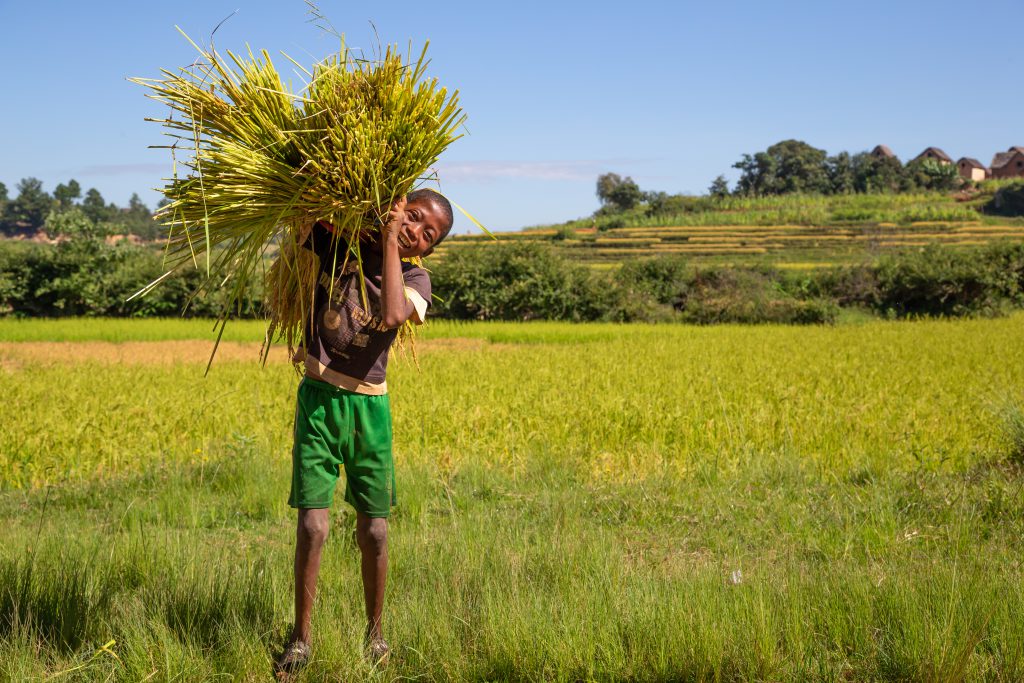
Madagascar is the 3rd largest exporter of mica in the world, mining which predominantly takes place in the south. Mica, a mineral used in cosmetics, electronics and automotive industries is mined for € 0.04 per kilo and exported to China (Terre des Hommes, 2020). Through research carried out by Terre des Hommes, it was found that there are approximately 22,000 people working in the mica mining industry of which children between the ages of 5 to 17, make up half of the mica mine workers.
The mine working conditions are harsh and children are exposed to materials that are harmful to their health (Terre des Hommes, 2020). Mica mining in Madagascar has increased 30-fold since 2008, however, the price per kilo has reduced, highlighting the severe exploitation in the mining industry. A majority of mica mining sites were found to not have licenses (Terre des Hommes, 2020).
Discrimination
Twin discrimination
Amongst the Antambahoaka people of Madagascar, living in the Mananjary village, twins are regarded as a curse and it is believed that twins cause family misfortune or death. Women who give birth to twins are often encouraged to abandon one or both twins or they face ostracization by their community. Twins are often taken to remote and desolate parts of the island, abandoned and left alone to die. More recently, after the establishment of orphanages by Christian Missionaries, more women are abandoning their twins there (Taylor, 2020).
Twin taboo is a sensitive topic because of its ancestral ties. Although there are laws protecting twins, cultural laws override legal laws. The government respects cultural beliefs which results in very few measures to address the issue (Chaudhuri, 2019). The historical reason as to why twins are discriminated against stems from a French revolt in 1947 where a Malagasy queen forgot one of her twins whilst fleeing to safety. She later sent her soldiers to find the other twin but they were all killed. Because of this long-standing historical story, the Antamahoaka people believe that twins are bad luck (Taylor, 2020).
Nationality discrimination
Madagascar has explicit discriminatory nationality laws, a product of their colonial history with France. Discriminatory nationality laws were set in place along ethnic and gender lines (d’Orsi, 2017). In 1966, Madagascar denounced the 1954 Convention Relating to the Status of Stateless Persons and has not ratified the 1961 Convention on the Reduction of Statelessness. There are unequal and discriminatory approaches to nationality rights for men and women and children born out of wedlock.
Children are able to acquire Madagascan nationality from their father, however, it is much more limiting to acquire nationality through their mothers (Equal Rights Trust, 2015). Children born to a Malagasy mother and a foreign father are able to apply to acquire Madagascan nationality before the age of 21. Children born to a Malagasy father out of wedlock are also able to apply for nationality, however they are vulnerable to the government’s decision as to whether they are worthy of citizenship or being directly discriminated against on the grounds of disability (Equal Rights Trust, 2015).
Child marriage
Madagascar has some of the highest rates in the world for child marriage. Oftentimes for poverty stricken families, early child marriage is seen as a means of survival (ECPAT Netherlands, 2014). There are regional variations in the child marriage rates around Madagascar. Girls that come from poorer regions, predominately in the south such as Toliara, show the highest rates of child marriage, with 69% of girls married before the age of 18; in the northwest region of Mahajanga 59%; in the northern region of Antsiranana 58% and in the eastern region of Fianaranstsoa 41% (UNFPA, 2017).
With approximately 91% of the population living below the poverty line in Madagascar, child marriage, poverty and education are all interconnected. The girls who are married off at a young age often come from vulnerable, poor and uneducated families in the rural parts of Madagascar. Around 60% of young girls who are married, pregnant or have given birth are at a disadvantage of accessing education as compared to 31% of girls who aren’t in that particular situation (UNICEF Madagascar, 2018).
Traditional practices in Madagascar vary according to the different regions and ethnic communities. An important precondition to marriage is for girls to prove that they are fertile. In order for girls to prove this, some communities allow girls as young as twelve to follow sexual initiation rites where they will stay with a boy/man overnight. In 2007, the Matrimonial Act was changed by the government, changing the minimum age of marriage to 18 for both boys and girls. Customary marriages do not fall under this Act and they are not subject to any age limitation (UNFPA, 2017).
Climate change
Madagascar is an African country that is deeply affected by climate change. As it is an island in the Indian Ocean, it is vulnerable to the impact of natural disasters and climate change (UNICEF, 2019). Air pollution, shoreline degradation, soil erosion, water contamination, deforestation, mining and loss of biodiversity are environmental issues that Madagascar faces (UNICEF, 2019).
According to the World Bank Climate Change Knowledge Portal, in 2013 air pollution contributed to 18,000 premature deaths in Madagascar. 40% of Malagasy children suffer from chronic respiratory infections. Indoor air pollution affects children’s brain development and makes them more susceptible to pneumonia, chronic pulmonary disease amongst other life-threatening illnesses (UNICEF, 2019). The use of solid fuel for cooking constitutes indoor air pollution and 95% of the population use solid fuel to cook.
In addition to poor sanitation and malnutrition, approximately 5 million people live in natural disaster-prone areas (UN News, 2020). “Famine-like conditions”, particularly in southern Madagascar, have increased since 2020, leaving 1.3 million Malagasy people in need of humanitarian assistance. Between July 2020 to November 2020, food insecurity in the country rose from 700,000 people to 1.3 million people (UN News, 2021).
The food crisis has deeply affected Malagasy children living in the regions of Androy, Anôsy and Atsimo Andrefana, with a large majority of children under the age of five, affected by global acute malnutrition (GAM) (UN News, 2021). To highlight the current climate emergency, 75% of children living within the Androy, Anôsy and Atsimo Andrefana regions have been left ‘foraging for food’ (looking for wild food sources) (UN News, 2021). Only 15% of the population have access to electricity. The insufficient supply of electricity has been a problem that has impacted the public health sector as well as the environment. The lack of electricity has led families to use firewood or petroleum lamps UNICEF, 2019).
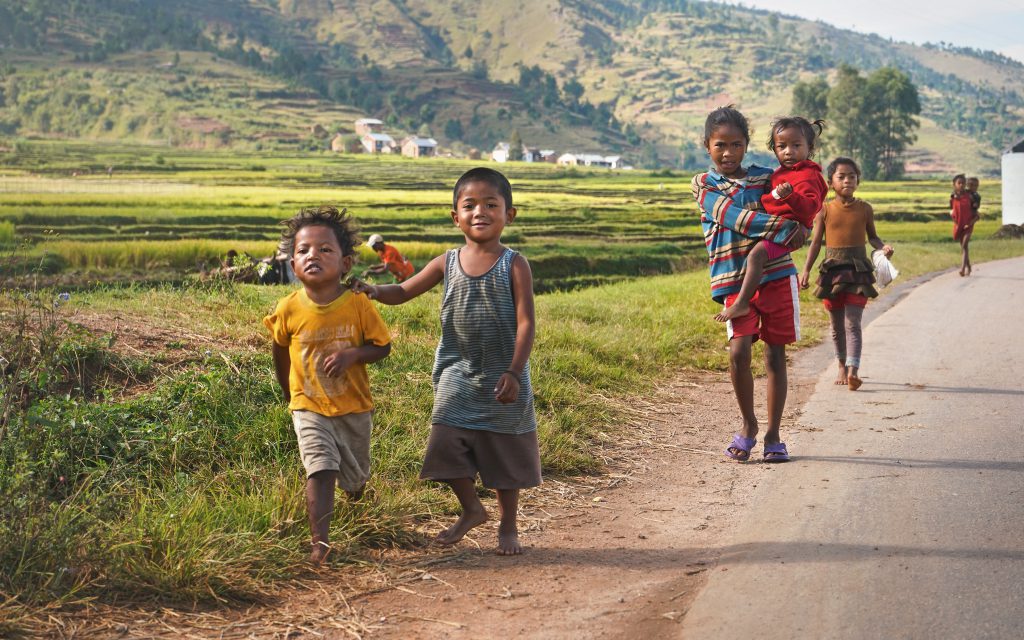
The developing physiology of children means that they are more vulnerable to climate change. In Madagascar, 35% of child deaths for children under the age of five are from acute respiratory infections, malaria and diarrhoea. The physical dangers that children face due to climate change include the collapsing of homes, hospitals or school buildings due to flooding or cyclones. The impact climate change has on the food system due to an irregular rainfall pattern, reduces agriculture and in turn leads to food insecurity and undernourished children (UNICEF, 2019).
Floods and torrential rains at the beginning of 2020, destroyed one hundred and seventy four schools and sixteen thousand people were forcibly displaced (UN News, 2020). The UNICEF Deputy Representative stated that floods are only one of the many challenges that Malagasy children face throughout the year. Other challenges as a result of climate change include natural disasters and drought (UN News, 2020).
Written by Vanessa Cezarita Cordeiro
Last updated on 26 March 2021
References:
BBC Monitoring. (2019, November 15). “Madagascar country profile.”
Chaudhuri, O. (2019, January 1). “The devil’s duplicates: the trouble twins of Madagascar.”
Child Law Resources. “Madagascar.”
Child Rights International Network. (2012, March 2). “Madagascar: National Laws.”
Global Campaign for Equal Nationality Rights. (2015, November 5). “Antananarivo, Madagascar.”
Harris, E. (2008, October 12). “Madagascar to tackle taboo on twins.”
Johns Hopkins COVID-19 Coronavirus Resource Centre 2021.
King, K. (2014, May 9). “The cursed twins of Madagascar.”
Madagascar Foundation. (2016, May 18). “To remind you – children of Madagascar.”
Taylor, M.E. (2020, June 24). “Why twins are killed among the Antambahoaka people of Madagascar.”
The New Humanitarian. (2011, November 3). “Twins taboo splits a community.”
The World Bank. (2020, July 31). “The World Bank in Madagascar.”
The World Bank (2021). “Mortality rate, under-5 (per 1,000 live births) – Madagascar, 2019.”
UNICEF. (2019, January 9). “Humanitarian Action for Children 2019 – Madagascar.”
UNICEF. (2019, June). “Climate landscape analysis for children in Madagascar.”
UNICEF. (2020, December 10). “Humanitarian Action for Children 2021: Madagascar.”
UNICEF Madagascar. (2018, December 31). “Water, sanitation and hygiene.”
UNICEF Madagascar. (2018, October). “Challenges & opportunities for children in Madagascar.”
United Nations General Assembly. (2013, December 23). “Report of the Special Rapporteur on the sale of children, child prostitution and child pornography, Najat Maalla M’jid Mission to Madagascar.” Human Rights Council Twenty-fifth session. A/HRC/25/48/Add.2.
UN News. (2021, January 12). “Humanitarian crisis looms in Madagascar amid drought and pandemic.”
Unreported World. (2017, November 26). “Abandoned at birth: the cursed twins of Madagascar.”
Vella, H. (2020, January 28). “Mining mica: can the industry overturn its legacy of exploitation?”
[1] This article by no means purports to give a full or representative account of children’s rights in Madagascar; indeed, one of the many challenges is the scant updated information on Malagasy children, much of which is unreliable, not representative, outdated or simply non-existent.

